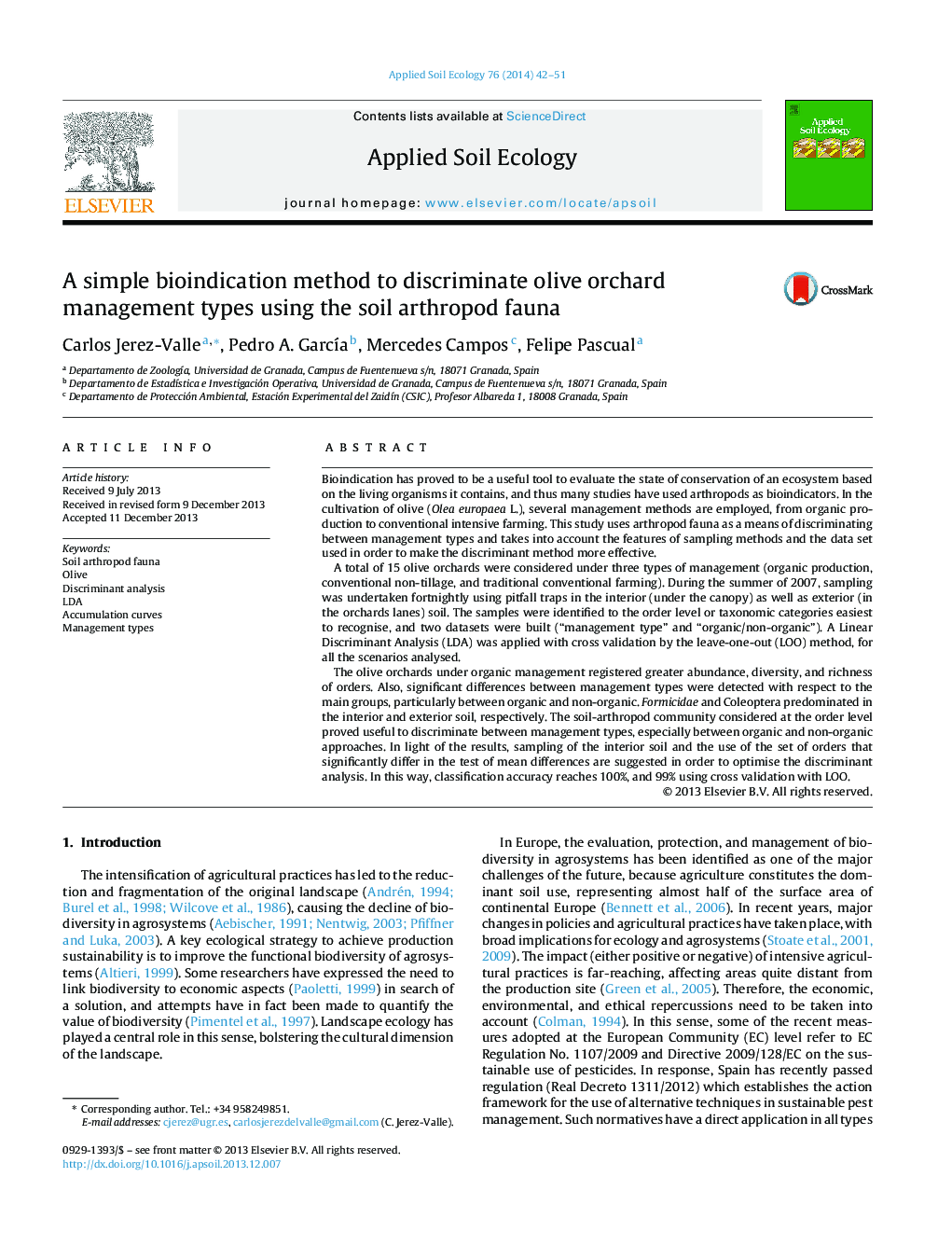| کد مقاله | کد نشریه | سال انتشار | مقاله انگلیسی | نسخه تمام متن |
|---|---|---|---|---|
| 4382259 | 1617807 | 2014 | 10 صفحه PDF | دانلود رایگان |
• We sampled interior and exterior soils of 15 olive-orchards under 3 management types.
• We use arthropod fauna at the order level to discriminate between type of management.
• Significant differences are found mainly between organic and non-organic production.
• Interior soil arthropod orders proved to be good indicators of management type.
Bioindication has proved to be a useful tool to evaluate the state of conservation of an ecosystem based on the living organisms it contains, and thus many studies have used arthropods as bioindicators. In the cultivation of olive (Olea europaea L.), several management methods are employed, from organic production to conventional intensive farming. This study uses arthropod fauna as a means of discriminating between management types and takes into account the features of sampling methods and the data set used in order to make the discriminant method more effective.A total of 15 olive orchards were considered under three types of management (organic production, conventional non-tillage, and traditional conventional farming). During the summer of 2007, sampling was undertaken fortnightly using pitfall traps in the interior (under the canopy) as well as exterior (in the orchards lanes) soil. The samples were identified to the order level or taxonomic categories easiest to recognise, and two datasets were built (“management type” and “organic/non-organic”). A Linear Discriminant Analysis (LDA) was applied with cross validation by the leave-one-out (LOO) method, for all the scenarios analysed.The olive orchards under organic management registered greater abundance, diversity, and richness of orders. Also, significant differences between management types were detected with respect to the main groups, particularly between organic and non-organic. Formicidae and Coleoptera predominated in the interior and exterior soil, respectively. The soil-arthropod community considered at the order level proved useful to discriminate between management types, especially between organic and non-organic approaches. In light of the results, sampling of the interior soil and the use of the set of orders that significantly differ in the test of mean differences are suggested in order to optimise the discriminant analysis. In this way, classification accuracy reaches 100%, and 99% using cross validation with LOO.
Journal: Applied Soil Ecology - Volume 76, April 2014, Pages 42–51
